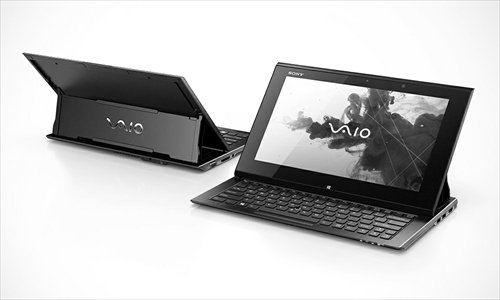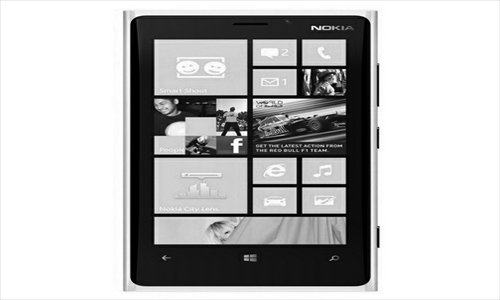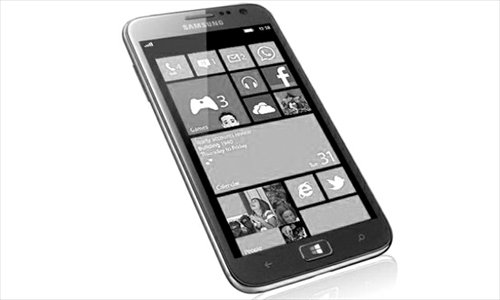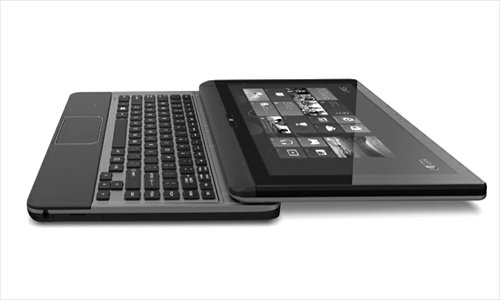Windows, fully armed
The coming week is bound to see plenty of excitement following Wednesday's release of the iPhone 5, possibly giving California-based Apple Inc a boost after the tepid performance of the iPhone 4S. In addition to Apple fans' thirst for the next installment in the iPhone lineup, sentiment on Wall Street also appears optimistic.
Shipments of the new iPhone are likely to gain up to 0.5 percentage points in annualized growth in the US during the fourth quarter, Michael Feroli, chief economist at JPMorgan Chase & Co, predicted in a note Monday, Reuters reported.
Such an estimate undoubtedly serves to strengthen Apple's prominence in the smart device arena. However, with the ever-growing ambitions of Apple's competitors, the new iPhone may not thrill tech-savvy consumers, especially after the launch of Google's latest update to its Android operating system, known as Jelly Bean, and Microsoft's Windows Phone 8.
While the latest item added to the Android menu may help Google cement its foothold in the smart market, banking on Jelly Bean's key advantages over Ice Cream Sandwich, including Project Butter, which is a big improvement on Android's CPU performance, Microsoft's announcement seems to signal a massive change to the current two-horse race between the iOS and Android systems.
During the second quarter of the year, Android and iOS hit a new combined high in terms of shares in the mobile operating system market, according to the latest data from the US-based market research agency International Data Corporation (IDC).
Android has in particular proved its mettle with a commanding market share of 68.1 percent during the last quarter, while Blackberry and Symbian recorded 4.8 percent and 4.4 percent shares respectively, IDC revealed in a statement in August. Microsoft also saw its position in the mobile operating system field inch up, with Windows Phone's market share rising to 3.5 percent from 2.3 percent a year earlier.
But with the introduction of Windows Phone 8 for smartphones and Windows 8 for PCs as well as tablet devices, market expectations for the Redmond, Washington-based software giant's ability to regain ground on the mobile platform have risen.
"With much of the world's mobile phone user base still operating feature phones, the smartphone OS market share battle is far from over," Kevin Restivo, a senior research analyst with IDC, noted in the statement. "There is still room for some mobile OS competitors to gain shares, although such efforts will become increasingly difficult as smartphone penetration increases."
The Windows Phone 8's Metro user interface and substantial leaps in integrating with the Windows 8 could very likely divert consumer attention from the two predominant players in the field. But uncertainties remain over its penetration into the market. Unlike iOS and Android's saturation of mobile devices from smartphones to tablets, Windows' two-pronged strategy in the smart arena confuses consumers despite its boasts of increasing compatibility between the two systems.
This week's special TECH page introduces you to several new smart gadgets that run on Microsoft's latest platform. Are they impressive enough for you to ignore the omnipresent hype of the new iPhone? Your choice may foretell the fate of the software giant's latest and foremost salvo in the smart battlefield.
Global Times

Japanese tech giant Sony has also jumped into the promising market for Microsoft's newest platform tailored for PCs and tablets, with the announcement of a hybrid model, the Vaio Duo 11, coming with an 11.6-inch full HD touchscreen with a resolution of 1,920 by 1.080 pixels.
The new gadget looks like a notebook, and it is in fact Sony's latest offering in the ultrabook lineup. This device can be turned into a tablet running on Windows 8 as well, by sliding in its keyboard. Weighing in at 1.3kg and boasting less than 18mm in thickness, Sony's new products looks to be undoubtedly in fashion.
The new hybrid device is expected to hit the market starting from October, according to the company.

Nokia Lumia 920
Samsung's launch of its Windows Phone 8 prior to Nokia's has put the Finnish cell phone maker in a dilemma, as the whole tech world had been awaiting the first such device from Nokia. The Lumia 920, which was officially unveiled by Nokia on September 5 as its flagship gadget packing the Windows Phone 8, is generally believed to show the ailing handset maker's muscle, though it is overshadowed by Samsung's overwhelming intrusion into the niche market.
Sporting a 4.5-inch PureMotion touchscreen, with a resolution of 1,280 by 768 pixels, the phone is a little chunkier, measuring at a thickness of 10.7mm and weighing 185g. It is also powered by a 1.5-gigahertz dual-core CPU, featuring an 8.7-megapixel camera with PureView technology and a 1.2-megapixel front-facing camera.
The phone also packs built-in storage of up to 32 gigabytes, although this model does not come with a microSD card slot. In addition, its battery is slightly smaller at 2,000 mAh. The release date and pricing information currently remain unknown.

Samsung Ativ S
South Korean handset maker Samsung Electronics' announcement of the first Windows Phone 8 in late August, just prior to the IFA in Berlin, the largest consumer electronics show in Europe, could definitely serve to boost the market outlook on the new platform. Samsung contributed a total of 44 percent of all Android smartphone shipments in the second quarter, more than the combined volume of the next seven vendors in the Android camp, according to IDC.
Running on the Windows Phone 8, the Ativ S is powered by a 1.5-gigahertz dual-core chip. It features a 4.8-inch Super AMOLED high-definition (HD) display, with a resolution of 1,280 by 720 pixels. Measuring a thickness of 8.7mm, the new gadget weighs in at 135g. The phone also comes with a rear camera of eight megapixels and a front-facing camera of 1.9 megapixels for video chatting. The first ever gadget to be powered by the Windows Phone 8 also packs a 2,300 mAh battery, as well as onboard storage of up to 32 gigabytes, plus a microSD card slot to enable additional storage.
The company has yet to disclose the exact shipping date and pricing for the new phone.

Toshiba Satellite U925t
Another Japanese company, Toshiba Corp, is also dabbling in the emerging Windows 8 trend, taking the wraps off its hybrid model Satellite U925t at the IFA.
The Satellite U925t, a combination of an Ultrabook and a tablet, comes with a sliding screen design. Featuring a 12.5-inch HD display with a resolution of 1,280 by 720 pixels, the coolly designed gadget packs an Intel Core i5 processor and a 128-gigabyte solid-state drive.
Measuring at a thickness of roughly 20mm and weighing slightly more than 1.3 kilograms, the slider is reported to arrive on the market in October, retailing for about $1,000.